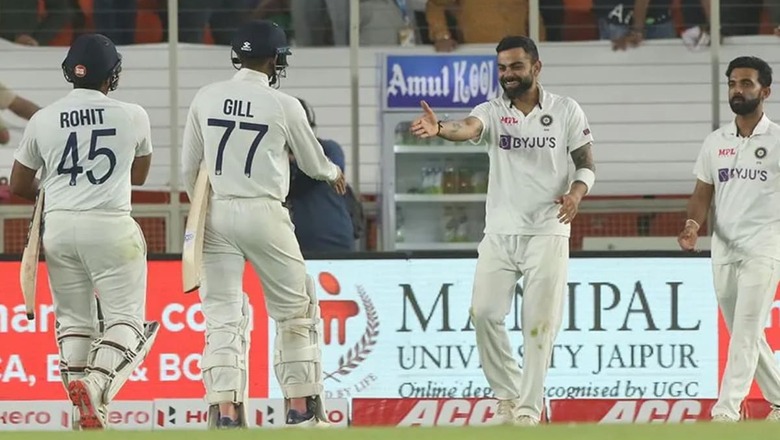
views
India are all but through to the first-ever World Test Championship (WTC) final to be played against New Zealand at Lord’s in June, unless England can pull off an unlikely surprise win at Ahmedabad in the fourth and final match of the ongoing series. India also have an unassailable 2-1 lead in the series, and have retained the Anthony De Mello Trophy – named after one of the founders of the Board of Control for Cricket in India (BCCI). Virat Kohli, India’s most prolific Test skipper with 35 victories, has also become the most successful captain at home. The team has won 22 off 29 matches in which Kohli has led in India, one better than MS Dhoni’s record of 21 wins in 30 Tests.
While these and a few more records and achievements will certainly make the Indian fan proud, has the third Test match at Ahmedabad, which ended in less than two days, been good advertisement for the classic form of cricket?
The match lasted just 842 balls as against 2,700 balls that a Test would usually last when played over five days. The Ahmedabad Test was the seventh shortest match in history and the shortest in 86 years in terms of balls bowled. It was also only the 22nd Test of the 2,412 played so far to end inside two days and that, too, with a result.
India vs England: ODI Series Could Be Shifted From Pune Due to Rise in Covid-19 Cases – Report
Of course, both teams playing out all five days would entail a draw, a result which neither the players nor the fans and spectators want to witness any longer. Though, some drawn matches are as interesting, if not more, as the ones that produce a result – flashback to the heroic Indian effort of saving the match and series at Sydney against Australia last month.
Notwithstanding a few exceptions like the Sydney heist, Test cricket no doubt needs to produce results. The results help keep up its popularity against the shorter formats of the game. Draws, on most occasions, are boring. They do not produce consistently engaging contests between the bat and ball.
But results such as the one at Ahmedabad leave cricket purists cringing. This is no contest between bat and ball, too, with four innings wrapped up inside two days – 30 wickets fell for 338 runs in 132 overs.
It’s easiest to blame the pitch for such results. But the bigger and underlying problem is the modern-day batsman. More adapt at playing quicker formats, batsmen do not apply themselves when faced with the several ever-changing variables.
My Mother, Sister and I All Started Crying When We Found Out About My Call-up – Suryakumar Yadav
Batting in Test cricket isn’t just about being in form, timing the ball and clearing the boundary rope, it’s more to do with technique, temperament and above all grinding down the opposition. While no Indian or English batsmen can be faulted for their technique and temperament, as it’s unlikely a cricketer would play at the highest level without one or either, where they have failed is in application of these qualities.
Test cricket has changed and so has the way players bat – quick run-scoring is the new norm. The meteoric rise of Twenty20 (T20) cricket and sustained focus on One-Day Internationals (ODIs) has resulted in batsmen forgetting the art of tiring out the opposition before delivering the final blow. Now, it’s more about landing knockout punches from the beginning.
While the latter approach may work on flat pitches, which are tailor made for run-scoring feasts in ODIs and T20s that last for a few hours, in five-day Test cricket, the variables – pitch, weather, condition of ball – dictate how you approach the game.
Interestingly, India used the former approach during their historic Test series wins in Australia in 2018-2019 and earlier this year. Cheteshwar Pujara would tire out their bowlers Pat Cummins, Josh Hazlewood, Mitchell Starc and Nathan Lyon when conditions were in their favour and Rishabh Pant or other batsmen would deliver the killer blows when the tide swung.
Confident, Innovative & Well-supported – This Version of Ashwin is Primed for Domination
Indian and English batsmen have failed to do that in the ongoing Test series. The pitches, of course, haven’t been comparable to the ones in Australia. They have turned square from the first over of the match. But then, that’s how Indian pitches have always been. The home team has traditionally relished batting on these pitches, while visitors have come prepared to counter the Indian spinners.
What’s changed this time is not the pitches, but the way batsmen are playing Test cricket. Batsmen trying to use the shorter-format approach in Tests may work for an innings, or two, but over a period of time, Test cricket, like life, will play the great leveller.
Get all the IPL news and Cricket Score here




















Comments
0 comment